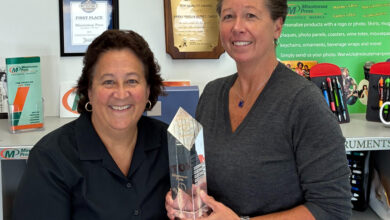Before beginning a project, there are variables that every print service provider (PSP) should be discussing:
- What’s the substrate made out of?
- Cast or calendered?
- What are the costs associated?
Correctly answering these questions will minimize rework and provide a checklist for PSPs when beginning a new project, no matter the application.
What film is right?
PSPs have two primary options when choosing films. Each has its pros and cons depending on the durability, cost, and conformability needed for the application.
- Cast: Also referred to as premium film, cast film is more durable and thinner than calendered to conform over contours, recesses, and textures easily. PSPs can use heat guns to soften the film and form around curvatures. Stretched areas may be post-heated so that the film stays within the recess and doesn’t pop out. There is a limit to the level cast films can be stretched, generally 30-50% of their original size. For example, a 10″ X 10″ film cannot stretch to a 20″ X 20″. Cast films are recommended for longer or permanent applications exposed to the elements such as vehicles or long-term signage.
- Calendered: These films, also called intermediate films, are thicker and meant for short-term applications. They’re less conformable and durable than cast films but are an excellent choice for graphics applied to flat and simple curved surfaces and even rivets if tenting is not a concern. They’re not a good choice for complex curves, deep channels, severe contours, or grooves. Even with primer, heat, tools, and advanced installation skills, the film is likely to lift or tent, either during the application or within hours or days of the application. They’re perfect for temporary sales promotions, and some calendered films are ultra-removable, allowing them to be removed and/or reapplied. They’re also a cheaper option that can be kept on hand for multiple types of applications to help reduce the number of rolls in a PSP’s shop.
As PSPs continue to push the boundaries of what can be wrapped, it will be more important than ever to consider the above questions.
Learn more: Recommendations and Applications for Floor Graphics



